On 31 December 2015, ESA’s tracking facilities based on a 15 m-diameter full-motion S/X-band tracking antenna and its supporting facilities at Perth, Western Australia, were formally retired after 30 years’ service supporting some of Europe’s most ambitious and successful missions. We asked Manfred Lugert, responsible for ground facilities at ESOC, ESA’s operations centre in Darmstadt, Germany, about the highlights from three decades of tracking spacecraft and launchers from down under.
ESA’s 15m tracking station, Perth, Australia Credit: ESA – CC BY-SA 3.0 IGO
Q. Tell us about ESA’s Perth tracking facilities
For thirty years, the Perth tracking facilities were operated by ESA as part of the Agency’s worldwide ground-station network, Estrack, which is distributed over seven countries on four continents. The first Estrack stations were developed in the 1970s and since then the network has steadily evolved according to the needs of ESA’s space programmes.
Today, Estrack broadly comprises two sets of stations: a series of 15 m-diameter (and smaller) tracking dishes used mainly for satellites in low- and near-Earth orbits and for launcher tracking support, and a trio of much larger, 35 m-diameter dishes used mainly for deep-space missions like those to Mars or Mercury and for Lagrange point missions.
All Estrack stations are remotely controlled during daily operations from the Estrack Control Centre at ESOC. Engineers on site only provide real-time operations support when needed, for example, during critical mission phases, and can react quickly in any non-nominal situation.
Built initially at Carnarvon in 1985 then relocated to Perth in 1987, ESA’s Perth tracking facilities were a cornerstone of Estrack, due to the site’s optimal geographic location and the technical ability to track both satellites and, later in life, launchers.
The facilities provided routine and critical-phase telemetry, tracking and command (TT&C) support for many ESA missions, initial signal acquisition and launch support for Europe’s rockets and tracking and monitoring of satellite payloads during transfer orbits in the launch and early operations phase (LEOP).
Q. Talk us through the development of ESA’s tracking facilities in Perth
Starting in the 1970s, ESA began collaborating with Australia in a variety of projects particularly with regard to the provision of spacecraft and launcher tracking and operations support(1).
A 15 m-diameter tracking station was installed first at the then-existing Carnarvon, Western Australia, facility in July 1985 to help support Giotto, ESA’s first deep-space mission, which encountered Comet Halley in 1986.
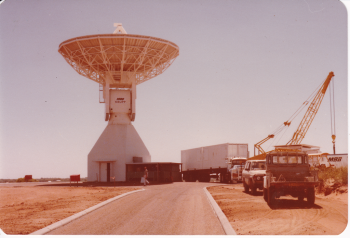
Perth antenna construction at Carnarvon, ca. 1985 Image courtesy Les Bateman (former employee OTC Carnarvon) via https://www.carnarvonmuseum.org.au
Upon completion of initial Giotto support in 1987, and with the pending closure of Carnarvon, the Overseas Telecommunications Commission (OTC(2); which later became Telstra), the Australian telecommunications company owning the Carnarvon Station and also providing the local operations and maintenance (O&M) services for ESA, disassembled, relocated and re-commissioned the entire facility, including the antenna, at the Perth International Telecommunications Centre (PITC), near the city of Perth, Western, Australia.
It is important to note that, at the time, PITC’s location in the Cullacabardee suburb on Gnangara Road was well away from the city’s population centre.
From there, until 2015, ESA Perth provided decades of reliable and technically excellent TT&C support for European launchers and ESA satellites such as Hipparcos, Giotto’s ‘second mission’ (its encounter with Comet 26P in 1990), XMM-Newton, SMART-1, the Sentinels, Cluster and many others. These included many of ESA’s highest-profile Earth observation, science and navigation missions.
It also supported missions owned by ESA partners including the French space agency (CNES) and Eumetsat.
Q. What are some of the highlights of Perth’s tracking history?
In 30 years’ history, there are many examples of technical and tracking operations excellence. Here are a few of the more recent:
- Perth antenna began tracking launchers – for an Ariane flight – in December 2009. Since then, it has tracked 20 rockets launched from Europe´s Spaceport in Kourou, including six Ariane, ten Soyuz and four Vega flights.
- In 2009, the antenna supported the double launch of ESA’s Herschel and Planck space telescopes on board Ariane flight V188. This was the first time that ‘LEOP tracking’ – catching the initial signals from a satellite immediately after it separates from the launcher – was performed using X-band frequency radio signals (instead of the commonly used S-band).This required the installation of a small X-band Acquisition Antenna mounted on the side of the main dish, which allowed it to acquire the two satellites, then ‘slave’ point the much larger 35 m-diameter dish antenna at ESA’s deep space station (DSA-1) site in New Norcia, about 180 km further north, which could then track the two.
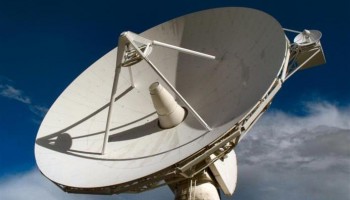
ESA’s Perth station is located 20 kilometres north of Perth (Australia) on the campus of the Perth International Telecommunications Centre (PITC). Credit: ESA – CC BY-SA 3.0 IGO
- In 2011, the antenna acquired signals from Russia’s ill-fated Phobos Grunt mission to Mars, which had failed to exit Earth orbit. Russian mission controllers were unable to establish reliable contact, and asked ESA for assistance. Despite establishing two-way contact and receipt of crucial on-board status information (telemetry), the craft failed to respond to new commands and later re-entered Earth’s atmosphere.
- When Gaia{{LINK}} was launched on board Soyuz flight VS06 in 2013, the antenna provided tracking support to both the launcher and the satellite. The antenna first tracked the Soyuz’s Fregat upper stage until separation using S-band radio signals, then switched to X-band to acquire signals from the Gaia spacecraft after separation. While this sounds straightforward, it required intensive technical preparation by engineering teams at ESOC and on site at Perth, and there was no way to practice such complex, real-time operational support in advance. It had to work perfectly the first time, and it did.
- More recently, the twice-yearly launches of Europe’s new Galileo satellite navigation system have relied on launcher tracking support from the antenna in Perth.
- In 2015, Perth antenna was instrumental in bringing the LISA Pathfinder spacecraft through six critical orbit-raising manoeuvres. These were needed to reach its operational orbit at the first Sun-Earth libration point (SEL1), where it will demonstrate the technologies needed to detect existence of gravitational waves, as predicted by Einstein.
The final operational usage of Perth antenna was for launcher tracking during the dual Galileo satellite (Nos. 11 and 12) launch on board Soyuz, 17 December 2015.
Q. Why is ESA’s Perth antenna being decommissioned?
The antenna’s lifecycle in Perth, Western Australia has ended, ironically, not through any technical obsolescence, but rather through very human factors: population expansion, man-made radio noise and the increase of radio frequency spectrum usage in the Perth urban area.
The ever-growing metropolitan area of Perth now surrounds the PITC compound, making it increasingly difficult to ensure a radio-interference-free environment in the critical S-band frequencies and resulting in conflict in allocation scarce frequency spectrum.
Ultimately, the growing demand of Perth’s citizens and businesses for Internet access based on fixed wireless (WiMAX) technology and in particular the need to support TV Outside Broadcasting (TOB) led the Australian Communication and Media Authority (ACMA) to stop granting a license for the use of S-band frequencies by ESA’s Perth antenna effective at the end of 2015.
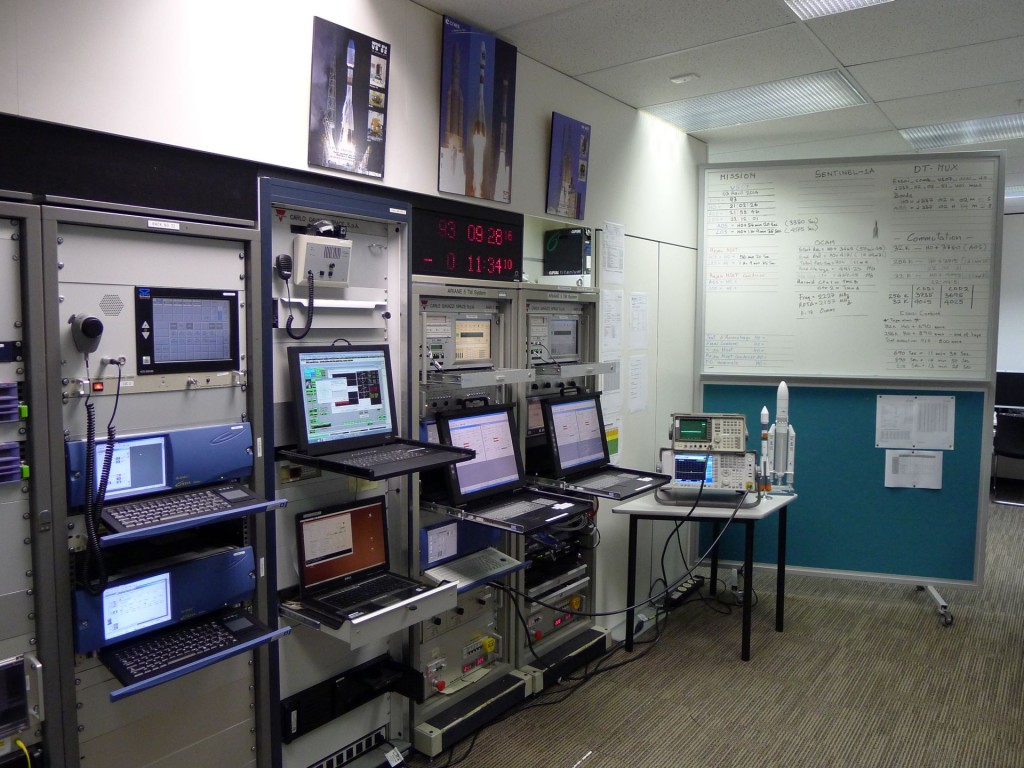
Perth antenna operations Credit: ESA
Q. What is ESA doing to maintain the capabilities previously provided by the Perth antenna?
Australia’s west coast is ideal for catching signals from newly launched rockets and their satellite payloads launched from Europe’s Spaceport in Kourou, French Guiana.
These typically head east across the Atlantic, and approximately 50 minutes after lift-off, can be seen from Western Australia. Also visible from here: the moment when spacecraft separate from the launcher, and the critical start of satellite operations in space. The location is strategic for ESA and so the services previously provided by the Perth antenna are being transferred to new locations.
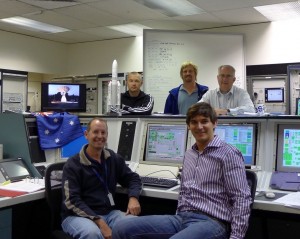
Tracking ATV’s Ariane launcher in 2013: ESTRACK and local operations team at Perth station, Australia Credit: ESA/R. Launer
The pending 2015 end-of-licensing permission for the antenna has been known for a number of years, and ESA has carefully planned a transfer of its service capabilities as part of the ESTRACK network evolution strategy.
Perth’s routine TT&C services in support of low- and near-Earth missions will be taken over by commercial service providers, including SSC Australia, who operate the Western Australia Space Centre near Dongara and the city of Geraldton, 400 km north of Perth.
For the critical X-band acquisition and LEOP support of future ESA missions as well as for launcher tracking, ESA have developed a new, specialised 4.5 m acquisition antenna co-located on site with ESA’s existing 35 m-diameter deep space antenna at New Norcia.
As was previously possible with the Perth antenna, the new antenna can acquire X-band as well as S-band signals from newly launched satellite, and then ‘slave’ control the larger antenna to conduct the actual initial TT&C or launcher tracking support.
Editor’s note: See “Tracking new missions from down under”
Q. What does this mean for ESA’s industrial support partners in Australia?
For many years after the 1987 establishment of Perth antenna at PITC, the facility was managed on behalf of ESA by Australia’s Overseas Telecommunications Commission (OTC), which later became Telstra(3), a well-established Australian telecommunication company.
Telstra had already developed operational experience tracking space missions such as Meteosat and Giotto from the Carnarvon station. The PITC facility is today still owned by Telstra.
The involvement of ESA in Perth started with the initial contract for O&M support established between OTC and ESA in 1986.
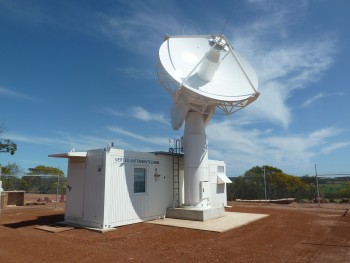
A new 4.5 m-diameter ‘acquisition aid’ dish antenna is being added to ESA’s existing New Norcia, Western Australia, tracking station, ready to catch the first signals from newly launched satellites. Credit: ESA – CC BY-SA 3.0 IGO
Since 2012, following a series of acquisitions and mergers, Inmarsat Solutions B.V. Australia, well known for its global mobile satellite communication services and the main antenna operator at the Telstra-owned PITC, has provided on-site O&M services for the ESA facilities in Western Australia.
In the intervening years, due to a number of industrial realignments, responsibility for on-site services were fulfilled by several companies, including Station 12 B.V., Xantic B.V. and Stratos Global.
ESA tracking activities from Perth were have been so successful due, in large part, to the continued support and development of expertise by our Australian industrial partners.
SUMMARY: ESA Perth antenna technical characteristics
- Perth tracking facilities were initially designed to send and receive radio signals to and from satellites and launchers in S-band radio frequencies at 2 GHz and to receive signals from satellites in X-band at about 8 GHz. The 2-GHz band typically provides a wider beam width but only caters for moderate bitrates. It could also receive in X-band.
- In 2004, the antenna was upgraded to enable transmission in X-band frequencies at about 7 GHz, providing bandwidth for higher bitrates (but a narrower beam width).
- In 2008, the facility was modified to allow European launcher tracking support. In addition, dedicated back-end equipment was integrated in the Main Equipment Room.
- In 2009, it was again upgraded with an X-band acquisition aid antenna, a small 1.3 m-diameter dish attached to the side of the main 15-m dish. This enlarged the station’s field of view in X-band at close ranges, enabling better acquisitions from newly launched missions. Starting around 2010, newer ESA satellites were no longer being equipped with S-band transmitters and communicated exclusively in X-band. This enabled the satellite’s scientific data transponders to also be used for telemetry and tracking, thereby saving mass.
- The ESA antenna was located on the PITC facility, and situated at -31° 48′ 09.08″, +115° 53′ 06.58″. The antenna was sited at 22.16 metres altitude with respect to the WGS-84 reference ellipsoid (a mathematically-defined reference surface that approximates the Earth’s geoid surface).
- In addition to the 15-m antenna, ESA´s tracking facilities in Perth provided terminal equipment and facilities for tacking, telemetry, telecommanding and radiometric measurements (ranging, Doppler, meteo). It hosted for many years an ESA operated GPS antenna used to generate very precise GPS orbits in support of ESA missions. A remote-controllable calibration tower was available for, among other uses, phase calibration of the tracking chains.
- Furthermore, Perth also provided a site with supporting infrastructure to allow installation of ESA’s former transportable TTC station – a prortable tracking station – which meanwhile has been de-commissioned.
- The facility had its own frequency and timing system, a monitoring and control system and communications to the Estrack Control Centre at ESOC via the ESA Operations Communications Network. The station was supported by the no-break power plant serving the rest of the PITC complex.
Notes:
(1) In fact, ESA’s activities down under began more than 40 years ago with the launch of Europa from the Woomera test range by ELDO – the European Launcher Development Organisation – which later became the European Space Agency.
(2) The Overseas Telecommunications Commission (OTC) owned and operated both the Carnarvon and Perth sites until the 1990s.
(3) In 1992, OTC was merged with Australia’s domestic telecommunications carrier, the Australian Telecommunications Corporation Limited (‘Telecom’) to form the Australian and Overseas Telecommunications Corporation Limited. The name change to Telstra came in 1993, just prior to privatisation.

Discussion: one comment
https://www.trooper.com/audio/WereHereForAGood.mp3